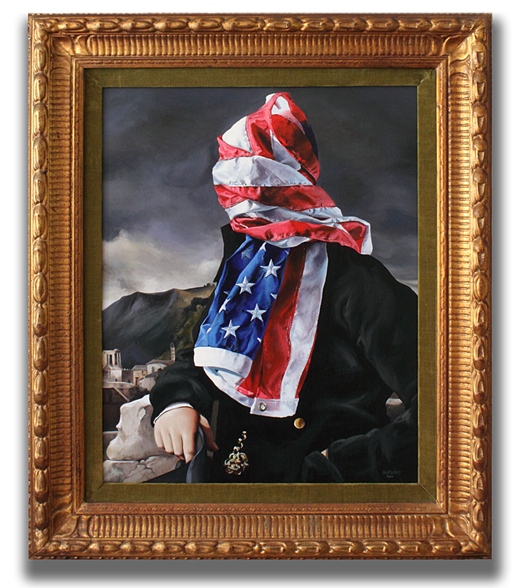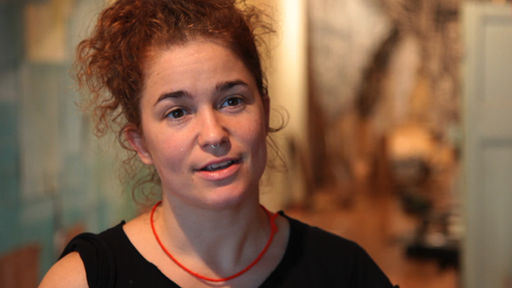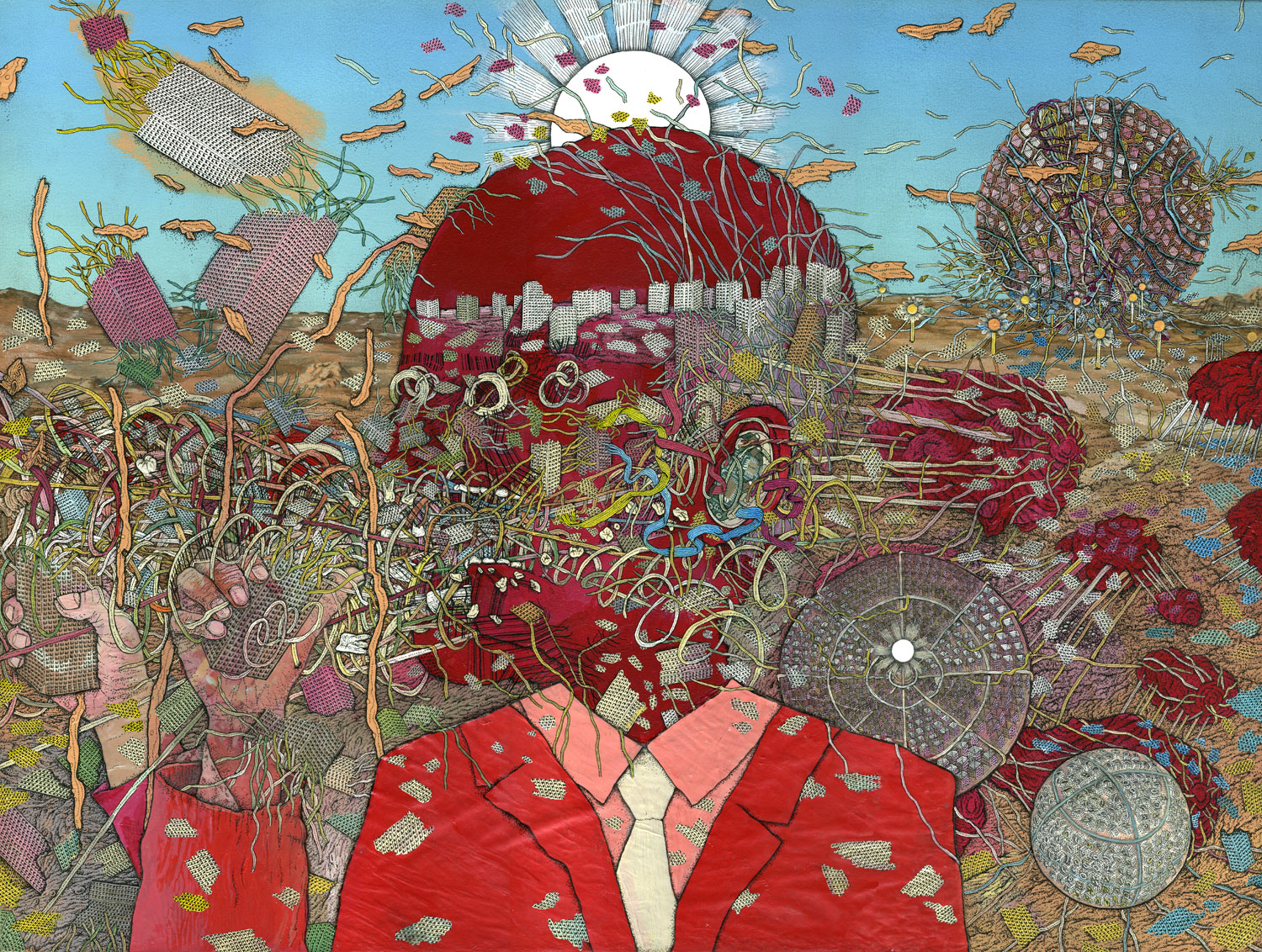
I met artist Tadashi Moriyama at Art Fair in 2015. I interviewed him through email. This was around the time that Kantra started walking and her life force was beaming. Haruki and I were exhausted, grappling with this new human among us. “Where did you come from?” Haruki asks her. “Do you remember?” I dropped the ball on this (and a few others). If you’re reading this Moriyama, my apologies.
The first time I saw Tadashi Moriyama’s work was at 2011’s annual Art Fair Tokyo. His paintings were mirrors of the private apocalypse plaguing us all, our brains morphing into rectangles with round corners to reflect our silicone masters. “Zettabyte” is like a still of the actual moment when our souls get zapped into algorithms. A salary man’s head explodes with fragments of tendrils, buildings, and segmented boxes. Enlightened and enslaved, his brain is a city of ruins fading into a barren skyline. He’s high functioning, multi-tasking, touch-and-go. Intimacy are strobe lights, too fleeting to internalize, too mesmerizing to pass up capturing. We are pointy pixels on an exaggerated screen, perfectly tethered and unscathed, unified in our segregation and mechanicalism.
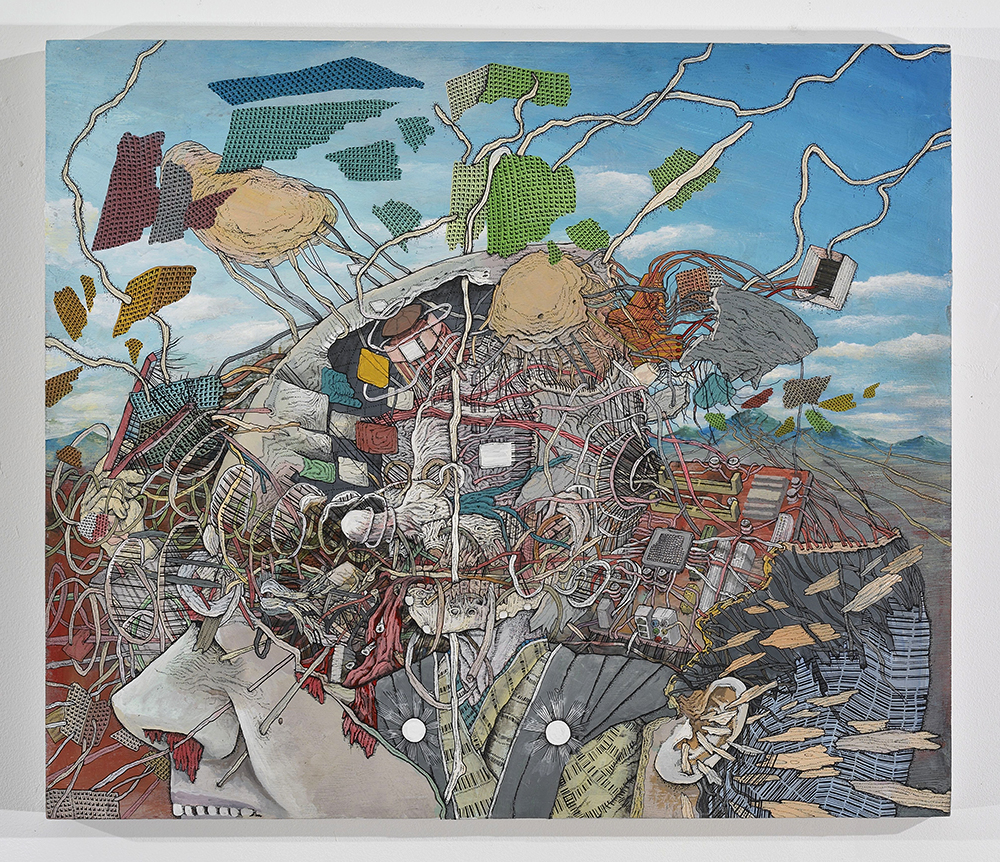
Acrylic and ink on canvas, 12 x 16 inches.
The drama compacted into them wants to explode out of the frame. They felt bigger than they were when I leaned into their worlds. It was like looking at a disease. He said he was influenced by Indian miniature paintings at the Philadelphia Museum of Art. “I took a graduate course one summer and I was just immersed into them. They were extremely detailed, and some lines were drawn by a single hair,” he said over email. Though his work varies in scale, they go from silent pandemics to on coming asteroids.
Moriyama approached me when I was visiting his gallery’s (Dowling Walsh) booth. I was taking a picture of one of his illustrations. I was excited to meet him, but he probably sensed my awkwardness, “How do you like Japan?” he excitedly asked me. Hearing the sincerity in his voice, I wanted to jump out of my mouth, so I opened it and just stared at him. “Oh,” he said. I told him that I liked his work. When asked about the natives’ response, he said they focus on the craftsmanship, not the idea. Japan’s art world is kind of cagey. Despite producing famously influential visuals, it’s as if Japan doesn’t know how much talent it actually has. Moriyama is a contemporary artist, which means that he has to blow up overseas before Japanese art lovers show genuine interest. May be that’s changed, but in the six years that I’ve been here, I’ve learned that change in Japan is like a dial-up connection. Mise well go nigh night while waiting, or test your head’s density against a bolder. But in the Art Fair Tokyo context, where traditional art is known to dominate modern perspectives, it was cool to discover work that actually struck me.
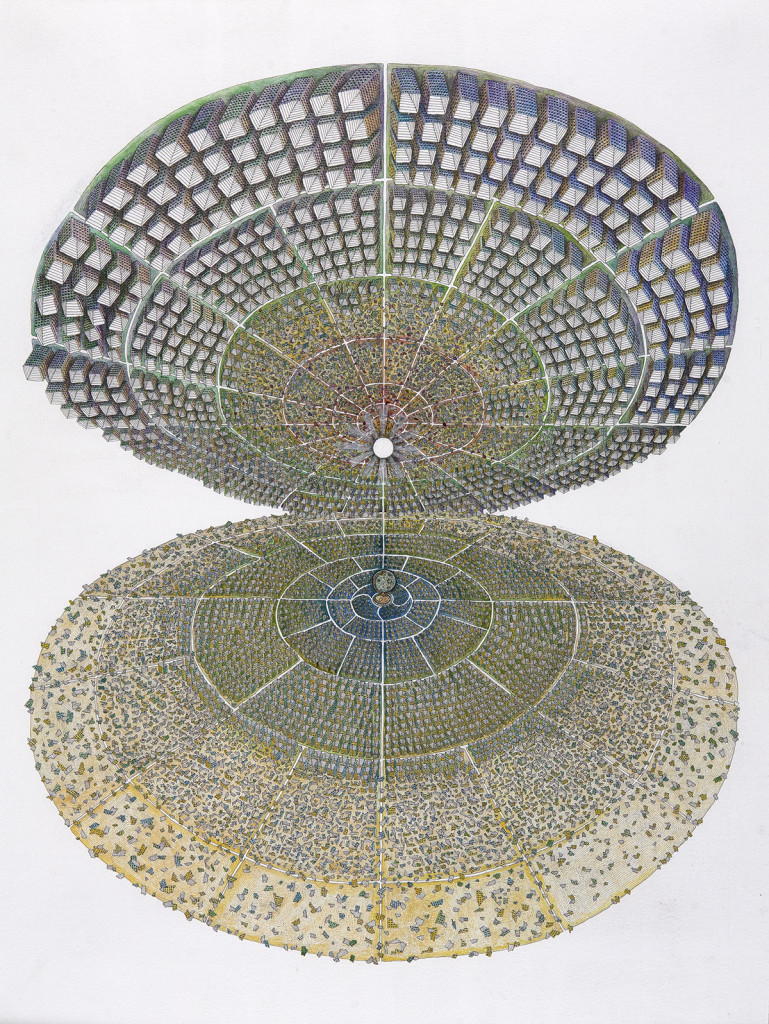
Born in Tokyo, Moriyama first came to the states at 16 as an exchange student. Living in Eugene, Oregon, the town “had this peaceful hippie atmosphere, where people were smoking weed in parks. It was surprising for me who came from a country where you can go to jail for five years for possession of marijuana,” he said. Having lived in the states for the past 12 years, he’s lived on both coasts. Currently, he’s settled in California with his family. When I asked him about living in the U.S. compared to Japan, he said, “I felt eased in the states. It would be more difficult to get used to Japanese society for foreigners because there is so much rules and customs, which are often vague and nonsensical.”
Like a lot of your favorite Japanese artist, Moriyama’s work was birthed from Japanese comics or manga. It’s regular -to see manga street signs, park rules, subway warnings. Comics are everywhere. Japanimation, like Black Jack, Akira, Nausicaa, Draemon, and Ghost In The Shell, were some of his favorite. The heroes in those stories “going through journeys in unknown places excited me very much,” he said.
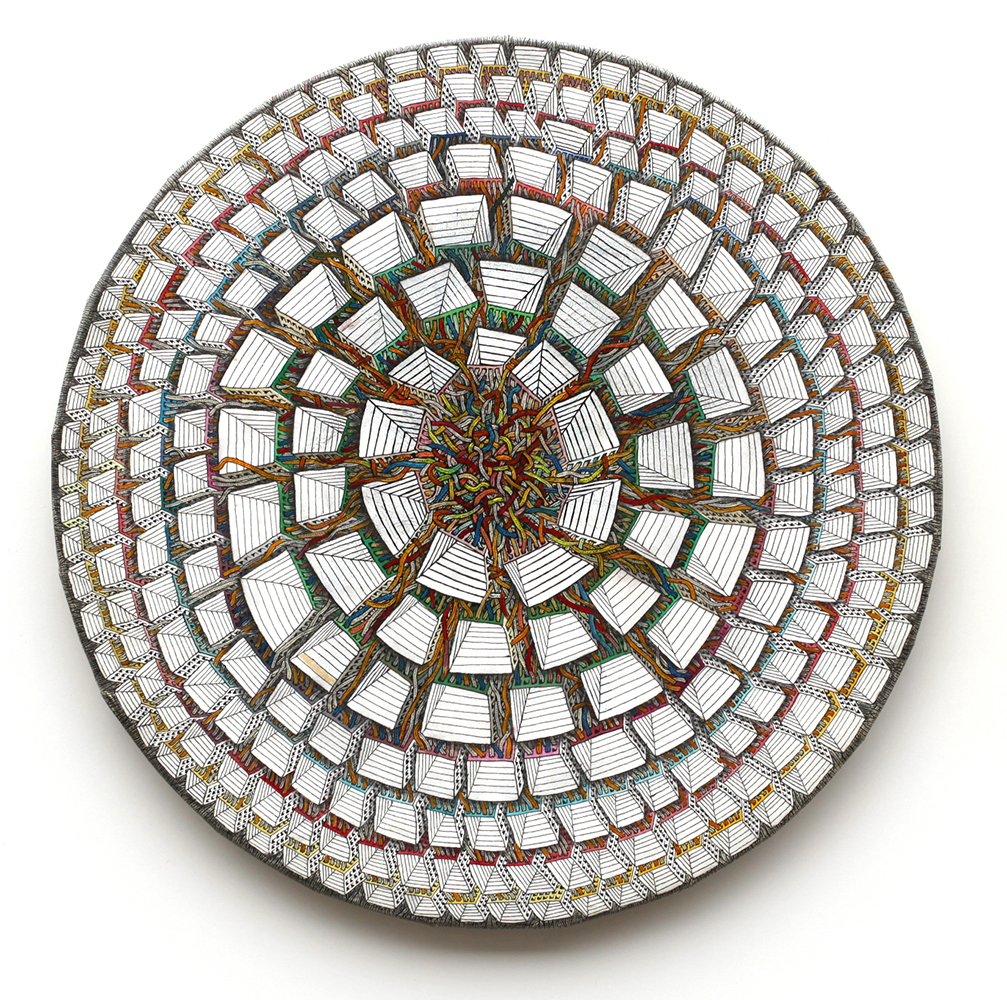
As a foreigner, I couldn’t escape how his work reflected his native land. It parallels this concept of what’s presented and what’s underneath that appearance, and how those two things are in direct conflict with one another. “Accelerating Sphere” is made of a garden of square structures rooted in twisted wires that look like multi-colored vines, unnatural and claustrophobic. “Japan is called a homogenous society, but the country has much diversity. People have different kinds of ideas and opinions,” he said. “On the other hand…” he weighs the benefits of technology. The ability “to copy and paste everything” erases the boundaries of the virtual world and the physical. “I started to make this cityscape of waffle-like buildings after I saw condo buildings popping up everywhere in between brick buildings in East coast cities. In Japan, there is also a large cluster of apartment buildings of a particular style and design. They’re everywhere in Tokyo. They’re convenient to make and I do celebrate the technology that allows us to make more comfortable places for people to live. At the same time, there is this fear that everything will become the same.”


